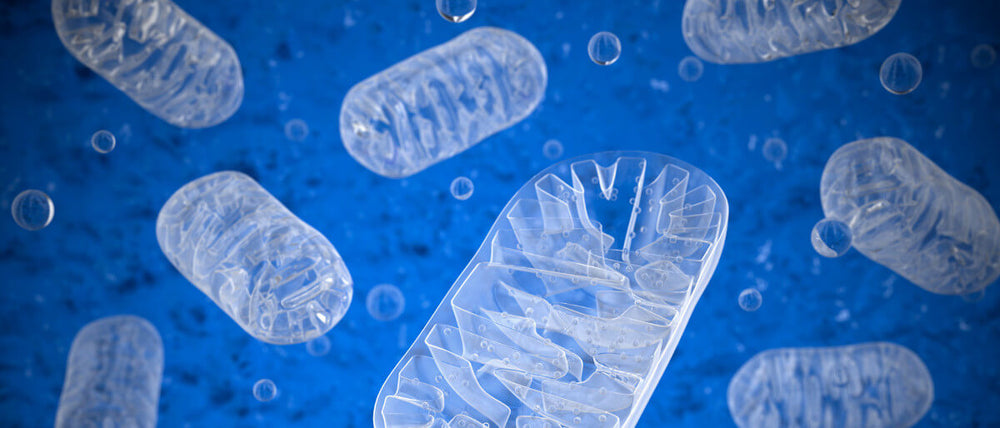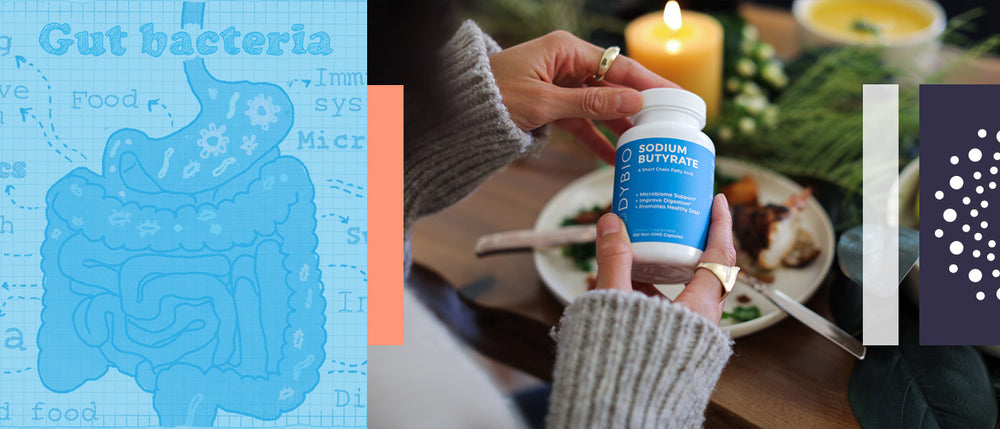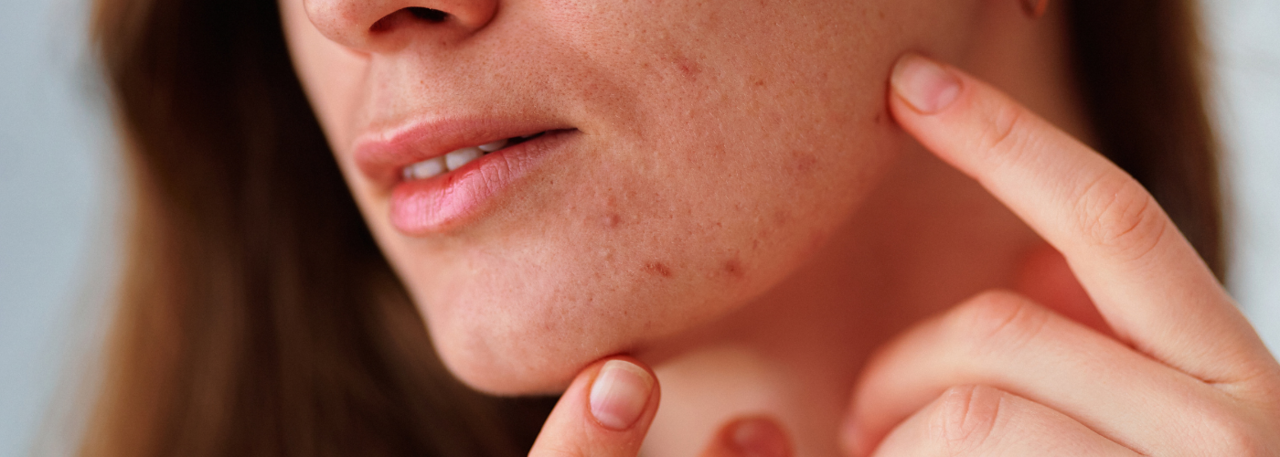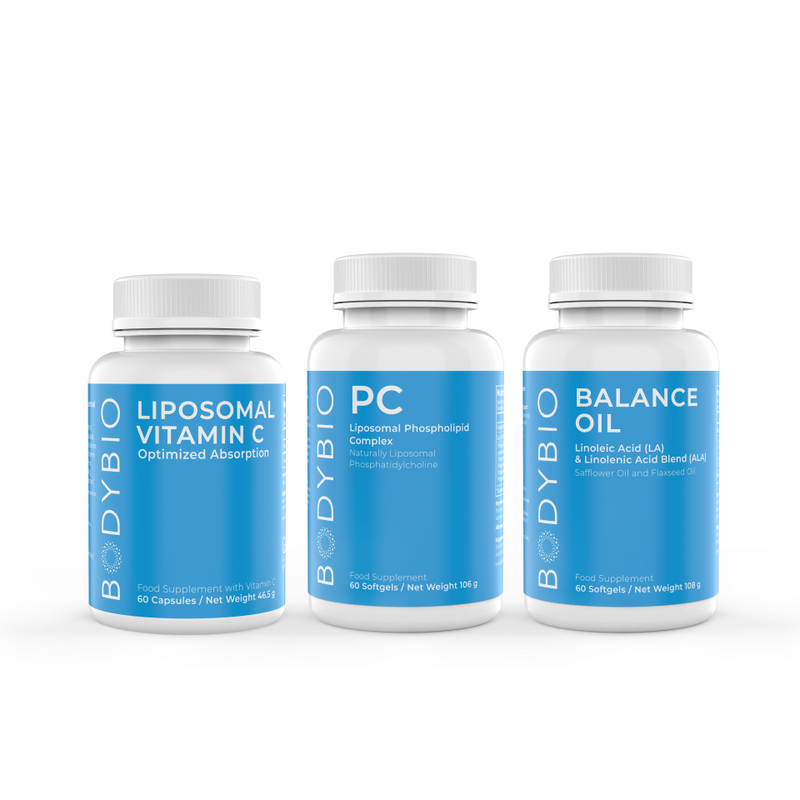The Ultimate Guide to Hormonal Acne Supplements: Science-Backed Solutions for Clear Skin
Key Takeaways:
Hormonal acne has a way of showing up at the worst possible time—right before a date, a work presentation, or a vacation you’ve been looking forward to. And for many adults, especially women in their 20s to 40s, those breakouts aren’t just a throwback to teenage skin. They’re a signal that something deeper is going on inside your body.
Supplements can be a powerful tool to support your body from the inside out. But with so much conflicting advice out there, it can be hard to know what works, what’s hype, and what’s safe. This guide will walk you through the science behind hormonal acne, the best-researched supplements that may help, and how to use them as part of a larger holistic strategy for clearer skin.
Table of Contents:
-
What Is Hormonal Acne?
-
What Triggers Hormonal Acne Flare-Ups?
-
The Best Supplements for Hormonal Acne (Backed by Science)
-
Additional Supplements to Support Skin Health and Hormonal Balance
-
How to Choose and Use Hormonal Acne Supplements Safely
-
Combining Supplements with a Holistic Acne Protocol
What Is Hormonal Acne?
Hormonal acne goes beyond the occasional breakout. It's a pattern of skin changes triggered by fluctuations in the hormones estrogen, progesterone, and androgens like testosterone. These shifts can cause the skin’s oil glands to become overactive, leading to increased sebum (oil) production, changes in skin cell turnover, and a greater tendency toward clogged pores and inflammation.
You might notice that hormonal breakouts show up:
-
Along your jawline or chin
-
Right before your period or during stressful times
-
As deep, sore bumps under the skin
This response happens because the sebaceous (sebum, or oil) glands are stimulated by androgens, which encourages more oil to build up. When this excess oil mixes with dead skin cells, it can block pores and create the perfect environment for bacteria to grow.
At the same time, inflammation in the body—often fueled by things like constant stress, poor diet, or lack of sleep—can worsen these breakouts. Active inflammatory pathways make it harder for your skin to repair itself and can increase the likelihood of persistent, painful blemishes.
What Triggers Hormonal Acne Flare-Ups?
Hormonal shifts might be the root of the issue, but they don’t act alone. Every day habits and stressors can also work behind the scenes, nudging your skin toward breakouts. Things like chronic stress, lack of sleep, processed foods, and even transitioning on or off birth control. These aren't direct causes of acne, but they absolutely influence how your hormones behave and how your skin reacts.
These triggers can kick off a chain reaction in the body. For instance, stress boosts cortisol, which can in turn bump up androgen (testosterone) levels—the hormones that stimulate your oil glands. A spike in blood sugar can do something similar, pushing your insulin levels higher and driving more oil production. Alongside hormone shifts, gut health plays a quiet but powerful role—the gut-skin axis can drive acne flare-ups when the microbiome is out of balance.
Let’s take a closer look at some of these root causes of hormonal acne.
Stress and the HPA Axis
Chronic stress kicks your HPA (hypothalamic-pituitary-adrenal) axis into high gear, setting off a hormonal domino effect. When the brain perceives stress, it signals the adrenal glands to release cortisol, the body's primary stress hormone. In response, androgen levels may also rise, particularly in women, as part of the body’s natural stress adaptation.
Birth Control Changes
Transitioning off of hormonal birth control can throw your body into a temporary state of hormonal flux. As synthetic hormones leave your system, your natural cycle may take time to reestablish itself. In this process, testosterone levels can rise, leading to an increase in oil production and breakouts, commonly referred to as “post-pill acne.”
This kind of acne is particularly common in the months following discontinuation of oral contraceptives, and it may persist until the body reaches a new hormonal equilibrium. Supporting your system with nutrients that aid hormone metabolism and skin health can help ease this transition and shorten the adjustment period. This is especially important to focus on after hormonal birth control, which can deplete key vitamins and minerals over time.
Blood Sugar Swings
When you eat a meal high in sugar or refined carbs, your blood sugar rises quickly. In response, your body releases insulin to help shuttle that glucose into your cells. But when this cycle happens too often, like with a diet consistently high in simple carbohydrates, your cells can become less sensitive to insulin. This is called insulin resistance.
Insulin resistance can lead to chronically elevated insulin levels, which don’t just affect your metabolism. They also influence hormone production. High insulin levels are associated with an increase in androgens and testosterone.
This blood sugar–hormone connection is especially important for people with polycystic ovary syndrome (PCOS), a condition marked by both insulin resistance and elevated androgens. For these individuals, managing blood sugar isn’t just about energy; it’s a foundational part of managing their skin health.
The Best Supplements for Hormonal Acne (Backed by Science)
These nutrients aren’t magic bullets, but when used alongside smart habits—like eating an anti-inflammatory diet, supporting gut health, and managing stress—they can make a meaningful difference. You’ll find that many science-backed nutrients for clearer skin also overlap with hormonal and inflammatory pathways.
Many of these same nutrients also play a key role in maintaining healthy hair, skin, and nails by supporting repair and resilience at the cellular level.*
|
Supplement |
Why It’s Helpful |
Best Forms |
|
Supports hormone metabolism, calms inflammation, and helps regulate oil production. Also known for its antibacterial effects on acne-causing microbes.* |
Zinc picolinate or gluconate |
|
|
Omega-3s |
Rich in EPA and DHA, omega-3s lower systemic inflammation and may help reduce the severity of acne. They also support hormone signaling and skin barrier function.* |
Fish oil, algae oil, BodyBio Balance Oil |
|
Vitamin D |
Plays a role in immune regulation and skin cell turnover. Low levels are linked to more severe acne. May help reduce oil production and inflammation.* |
Vitamin D3 (cholecalciferol) |
Additional Supplements to Support Skin Health and Hormonal Balance
In addition to core skin-clearing nutrients, several other natural compounds can support hormone balance and skin clarity. These supplements tend to work more holistically, supporting the body’s ability to process and regulate hormones or reduce the hormonal signals that trigger breakouts.
DIM (Diindolylmethane)
DIM is a natural compound found in cruciferous veggies like broccoli and Brussels sprouts. It helps your body break down estrogen into gentler forms that are easier to eliminate (less inflammatory and easier on your system). More specifically, DIM encourages your body to process estrogen in a way that’s less likely to stir up breakouts or cause hormone-related congestion. This can be especially helpful during or post-birth control, or times when you know you’re encountering more xenoestrogens in the environment.*
Spearmint
Spearmint tea has become a go-to in the natural wellness world thanks to its gentle hormone-balancing properties. It may help lower free testosterone levels, especially helpful if your breakouts are linked to excess androgens. Drinking a cup or two a day has shown promise in small studies for reducing oiliness and helping skin stay clearer over time.*
Vitex (Chasteberry)
Vitex is an herbal remedy traditionally used to support reproductive hormone balance, particularly in people with irregular cycles or PMS (premenstrual syndrome) symptoms. It’s thought to work by promoting the release of luteinizing hormone (LH), which may support healthy progesterone levels. When progesterone is low, especially in the second half of the menstrual cycle, acne can flare. Vitex can help smooth out hormonal fluctuations and reduce cycle-related breakouts.*
Phospholipids & Essential Fatty Acids
Phospholipids form the structural foundation of every cell membrane in the body, including skin cells, and play a vital role in maintaining skin structure and hydration. When paired with essential fatty acids, like those found in omega-3-rich oils such as Balance Oil, they help maintain skin integrity, improve barrier function, and support a healthy inflammation response from the inside out.* This duo is particularly important in supporting nutrient absorption and hormonal communication throughout the body.
Together, this combo supports skin repair, nutrient absorption, and hormonal signaling, making it a foundational part of inside-out skin health.
BodyBio’s SkinCell Essentials Bundle combines Balance Oil, Phosphatidylcholine (PC), and Liposomal Vitamin C to support skin health, hormone balance, and cellular function in one synergistic trio.*
How to Choose and Use Hormonal Acne Supplements Safely
Once you’ve found supplements that support your skin and hormone health, the next step is knowing how to use them safely and effectively. It's not always as simple as popping a capsule every day. Factors like dosage, timing, absorption, and individual nutritional needs can make a big difference in your results.
Dosage Recommendations and Absorption Tips
Start low and go slow, especially with fat-soluble nutrients like phospholipids and omega-3s. These are best absorbed with meals that contain healthy fats. Zinc is usually well tolerated, but it can cause nausea on an empty stomach, so take it with food. Always follow label instructions or consult your healthcare provider for personalized dosing.
Signs of Potential Deficiencies or Imbalances
Your skin (and hair, nails, and energy levels) often reflects your nutritional status. Persistent acne, fatigue, hair thinning, or brittle nails might point to low levels of zinc, vitamin D, or essential fatty acids. If you suspect a deficiency, your primary care provider might suggest blood work to help identify what you’re missing and what you may not need.
What to Watch Out For: Side Effects and Interactions
Even natural supplements can have side effects or interactions. Extremely high-dose vitamin D can affect calcium balance, DIM can alter estrogen metabolism, and Vitex isn’t recommended during pregnancy. If you're taking medications or managing a condition like PCOS, check with your provider before starting any new supplements.*
Combining Supplements with a Holistic Acne Protocol
Supplements can play a major role in hormonal skin support, but they work best as part of a bigger picture. Focus on a balanced, anti-inflammatory diet, regular movement, quality sleep, and stress‑supporting nutrients (learn more about this in our guide to anti‑aging supplements). Skincare also matters, so choose gentle, non-comedogenic products that support your skin barrier, not strip it.
For personalized results, hormone testing can be helpful in guiding your supplement choices. However, foundational nutrients like healthy fats and vitamin C are a great place to start.*
Ready to support your skin from the inside out? Try the BodyBio SkinCell Essentials Bundle. This trio nourishes your cells, calms inflammation, and supports hormone function where it starts: at the cellular level.*









